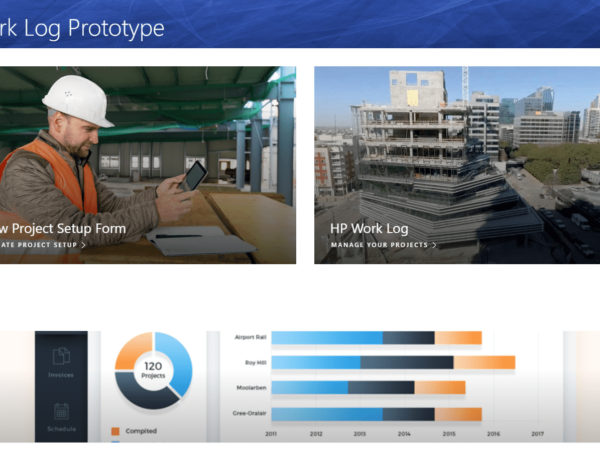In North Texas, construction industry costs are soaring and build times are slowing down.
Construction companies will need to find definite alternatives to soaring prices. We will see companies become more tech savvy and try to use software to solve higher costs and slower build times.
Why Construction Costs are Soaring
The labor pool is more expensive. Construction employment declined by 985,000 jobs, or 15.8%, between 2005 and 2015, as many workers left the industry following the housing bust.
“As construction jobs disappeared during the recession, many workers switched to occupations with better job prospects, or retired.” Andrea Cross, Americas head of office research for CBRE told Realty News Report.
Due to the smaller labor pool and an uptick in construction activity, many markets are experiencing labor shortages, driving up construction costs.
According to the Dallas Morning News, Scott Davis, with housing analyst Meyers Research, said, “Dallas is undersupplied by 10,000 to 20,000 construction workers. We should have about 99,000 people employed in the building industry.”
Construction Productivity is Decreasing
An overall trend in the United States is that productivity is decreasing. People are not as productive as they once were. Unfortunately, construction is not an anomaly. It too suffers from low productivity.
The United States is plagued with poor productivity levels and lags behind other industries. According to the Bureau of Labor Statistics in 2013 there has been little improvement in the construction industry between 1987 and 2011.
Drones Lead to Deluge of Data
As companies try new tools, data can overwhelm and slow down construction companies even more.
For example, drones are proliferating construction sites. They are used to verify construction projects on a daily or weekly basis. They are being used to view structures instead of sending personnel on dangerous inspections.
But what do we do with all this new data? Most likely, it will end on a server somewhere. The data will be unstructured and not easily accessible or searchable.
There are services designed to fight this like Smartvid.io. They use machine learning to automatically tag and categorize photos from the construction site. But even that technology is limited with drone video.
Data Integration
As companies start using new collaborative tools and going into the cloud, integration is still a struggle. CIO wrote that about 90 percent of businesses are using the cloud. But initial integration is creating challenges.
“Integration challenges remain long after organizations first make the jump to the cloud, it’s clear that the technology is here to stay. Businesses who ride out the current storm and find the right balance of public, private and hybrid cloud solutions will gain a unique advantage over the competitors,” according to CIO.
Making your software and solutions talk to one another is critical.
“When applications don’t ‘speak’ to one another or share information, companies are forced to continuously update different systems of record,” HingePoint CEO and Founder Bryce Finnerty said. “They are prisoners to the technology they use.”
So How Do You Integrate?
You must create a system of record. Here are five steps that will help you create a system of record.
- Document the steps in your business process. Create a spreadsheet to capture the tasks performed and tools & systems used by each user/role active in the process.
- Research the data used in each step. Include the information found in each report, screen, or document used in the process. Create a data dictionary of all data fields and the system they come from (and who “owns” that data).
- Agree on the company “system of record” for each data point within each step in the process.
- Locate the duplicate data – Check the steps recorded and the systems involved. This step is key. The goal is to standardize the data formats and establish a comprehensive “data definition” that supports the business.
- Migrate all data directly into the “System of Record” and then integrate the down- stream systems into it. Make the system “share data” across the enterprise, not duplicate it.
The System of Record eBook
Are you dealing with multiple systems that don’t talk to one another? Looking for a way to integrate your systems so that you can eliminate redundancies and increase efficiencies?
Topics Include:
-The secret solution to meeting the top 3 systems integration objectives of most companies
-A simple, 5-step process for systems integration
-2 case studies that show the challenge, solution, and results from this approach
HingePoint covers the AEC Industry and is the author of The AEC Industry 4.0 Report and the Autodesk Industry Report 2017. HingePoint helps construction and real estate development companies take control of their company’s information. We combine systems, software, and data so all company information can be seen and accessed from one screen, like a smartphone or computer.
HingePoint provides Procore, SharePoint and Salesforce consulting for Commercial Real Estate and Construction companies. HingePoint also helps the AEC industry with development & integration of AutoDesk and Procore products with enterprise systems. We are a trusted partner with over 25 years experience of systems development and integration work in the AEC industry. Our clients range from top hotel brands and restaurant chains to AEC firms and real estate developers and Facilities Management. We provide BIM with ROI. Results Guaranteed…Literally Guaranteed.





